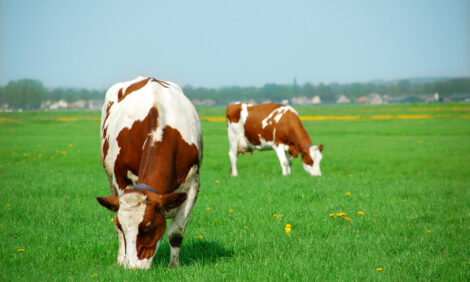



Vaccination Key to Prevent Respiratory Disease
US - Cattle producers have been warned that now is the time to vaccinate calves against respiratory disease, before turning them out to pasture.| Calves need vaccinating Photo: StockXchange |
Extension Service veterinarians in North and South Dakota are urging cattle producers to include prevention in their branding and turnout calf vaccination programs.
Drought conditions prevail in parts of both states, so short supplies of grass and water are of major concern to producers. Sick calves only make the situation worse.
Producers often refer to these calves as having dust pneumonia.
“Dust pneumonia really doesn’t exist,” says North Dakota State University Extension Service veterinarian Charlie Stoltenow. “Dust does not cause pneumonia, but it does add to the total stress suffered by an animal during drought conditions. If a calf died due to ‘dust pneumonia,’ it actually died from bovine respiratory disease, or BRD complex.”
Each year BRD complex costs U.S. producers about $500 million. Most cases of BRD occur during the fall months, when calves come off range and pasture, and are weaned and put into feedlots. However, during years of intense stress early in a calf’s life, pneumonia can occur when it is on pasture.
“This year is shaping up to be one of those years where calves on pasture are going to be under increased stress and will be at greater risk for BRD,” says South Dakota State University Extension Service veterinarian Russ Daly. “Producers need to start thinking now about vaccinating calves for respiratory pathogens before they are turned out onto pasture because having to treat calves out on pasture is not an ideal situation.”
While postweaning BRD has been well-defined through the years, its occurrence in calves on summer pasture is not as well-understood. Possible factors that may play a role are infections with viruses such as infectious bovine rhinotracheitis (IBR), bovine respiratory syncytial virus (BRSV) and bovine virus diarrhea (BVD); stressful events, such as long-distance movements or weather events; mineral deficiencies; and dusty conditions, all of which affect the calf’s ability to fight off BRD.
This summer, researchers from SDSU and several cattle producers are teaming up with the goal of better understanding the various risk factors that contribute to summer pneumonia.
Stoltenow and Daly recommend producers work with their veterinarian to plan a calf health program for this year’s pasture season. This may include vaccines that protect against viruses such as IBR, BRSV and BVD or, in some cases, against bacterial pathogens such as Mannheimia or Pasteurella.
“If we are treating BRD out on pasture, we are too late in the game for economical intervention,” says Stoltenow. “Every time we have to treat an animal for a respiratory condition, we are lowering the performance and value of that animal. Prevention is the key to profitability.”


